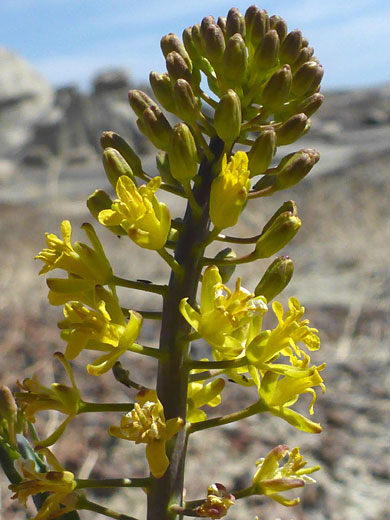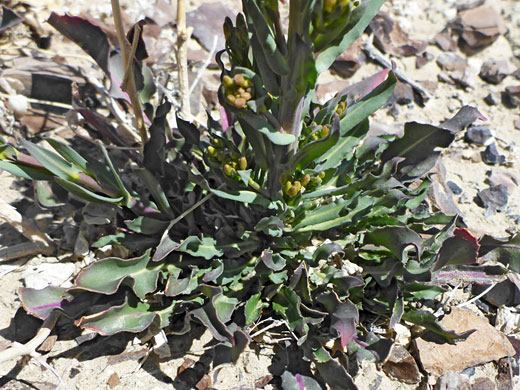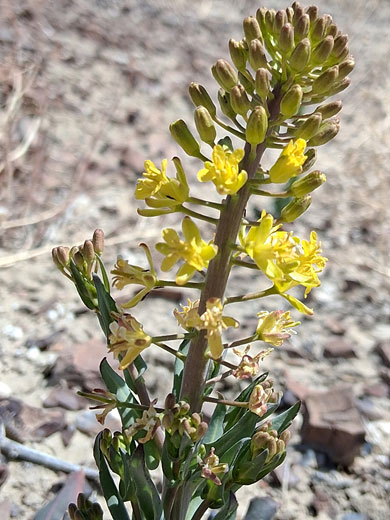Thelypodiopsis Aurea, Durango Tumblemustard
Plants > Wildflowers > Brassicaceae > Thelypodiopsis Aurea
Common name:
Durango tumblemustard
Family:
Scientific name:
Thelypodiopsis aurea
Main flower color:
Range:
The Four Corners area
Height:
Up to 2 feet
Habitat:
Plains and slopes, on selenium-rich, clayish soils, from 4,000 to 7,200 feet
Leaves:
Basal (petiolate) and cauline (sessile); oblanceolate to oblong, up to 2 inches long, with wavy and/or shallowly toothed margins
Season:
April to May
Thelypodiopsis aurea has limited distribution in the Four Corners area; it is most common in the San Juan Basin of New Mexico. This is an early-flowering species, growing on open, clayish plains.
Plants have a relatively short but thick stems, with leaves concentrated at the base. All parts are hairless. Plants branch at the base and along the lower portion of the stem. Basal leaves, in a rosette, are attached by stalks of up to 1.5 inches, while stem leaves are sessile, and auriculate at the base. Leaves are grayish-green, often with a purplish tinge. Upper stem leaves are reduced in size.
The inflorescence is a dense, elongated, unbranched cluster. Sepals are spreading, sometimes reflexed. The pale yellow petals are oblong to spatulate in shape, about half an inch in length. Fruits are slender, cylindrical pods, straight or curved, up to 3 inches long.
Plants have a relatively short but thick stems, with leaves concentrated at the base. All parts are hairless. Plants branch at the base and along the lower portion of the stem. Basal leaves, in a rosette, are attached by stalks of up to 1.5 inches, while stem leaves are sessile, and auriculate at the base. Leaves are grayish-green, often with a purplish tinge. Upper stem leaves are reduced in size.
The inflorescence is a dense, elongated, unbranched cluster. Sepals are spreading, sometimes reflexed. The pale yellow petals are oblong to spatulate in shape, about half an inch in length. Fruits are slender, cylindrical pods, straight or curved, up to 3 inches long.
All Contents © Copyright The American Southwest | Comments and Questions | Contribute | Site Map



